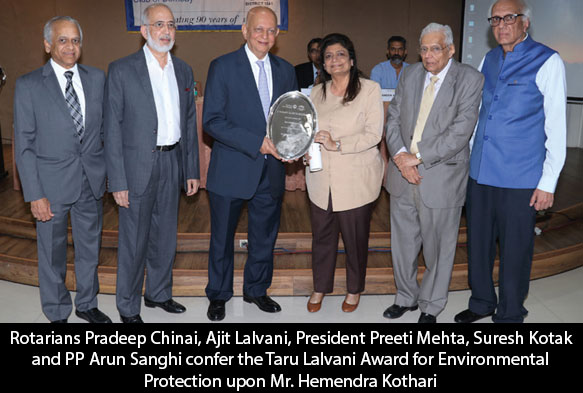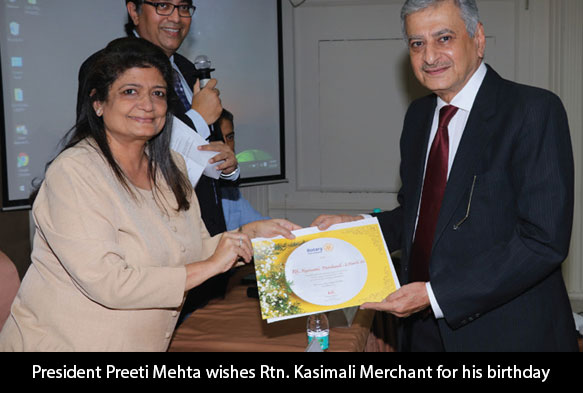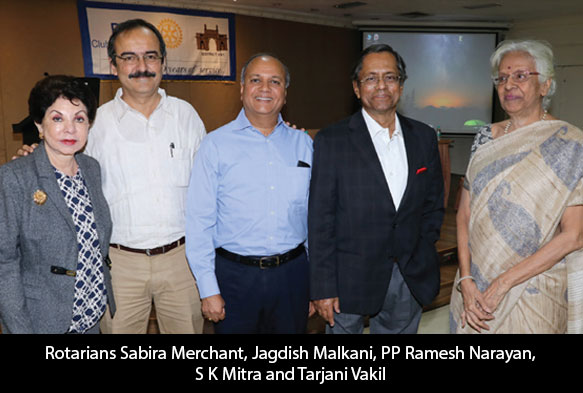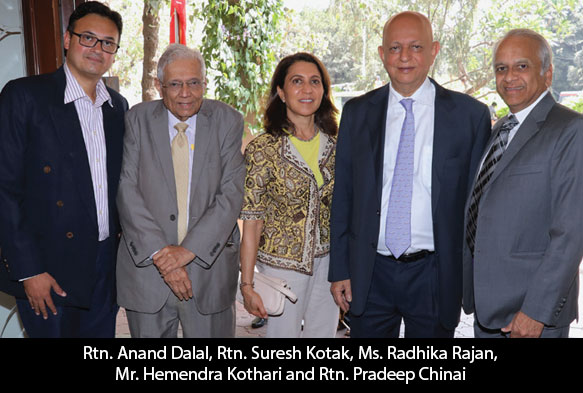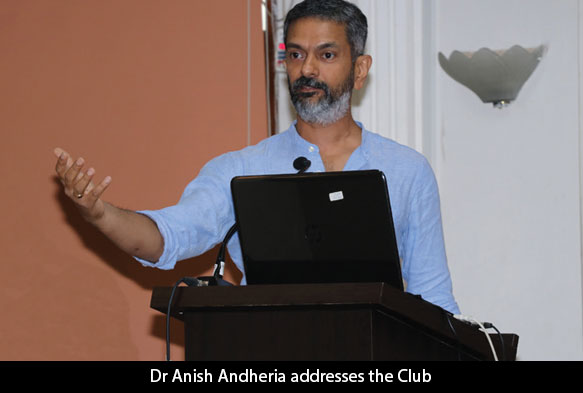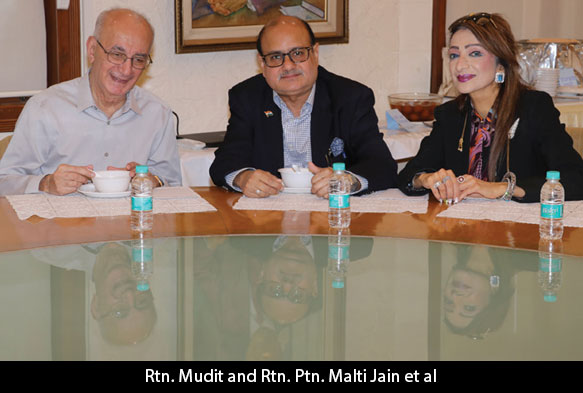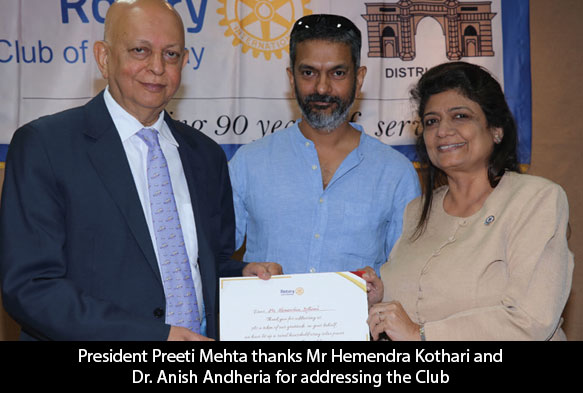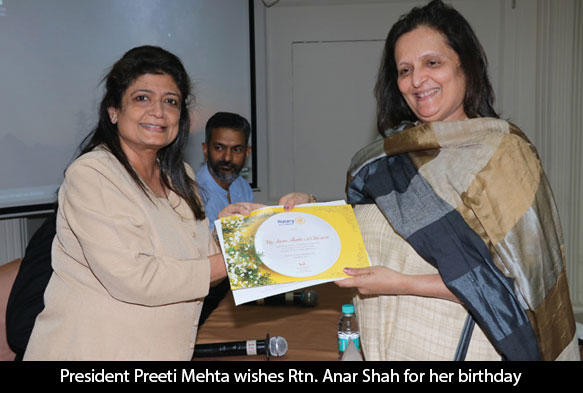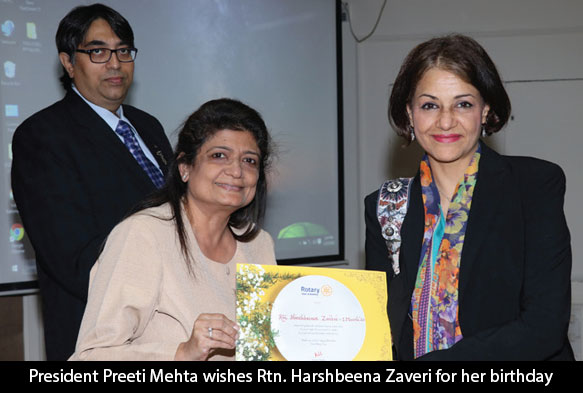
Save Wildlife, Save The Future
Hemendra Kothari, who received the Taru Lalvani Award for Environment Protection last Tuesday, talked about conservation and wildlife along with Dr. Anish Andheria
Hemendra Kothari is the chairman of the India chapter of Nature Conservancy, the largest conservancy in the world of which 73 countries are a part.
“I realised the impact of climate change in the last few years. If we do not have forests and biodiversity, we are going to have serious problems. Today, India needs 20 per cent of forest area but it hardly has five per cent of good forest area. When I became interested in forest protection about 19 years ago, I realised what forest is by accidentally going to Corbett National park with my four friends. We saw a leopard in 15 minutes; that image still remains in my mind. I went to many sanctuaries and national parks before I saw the first tiger. It took me about 10 years to see the first tiger.”
“In the 90s, I realised that our tigers are disappearing as forests are depleting. That is when the Wildlife Conservation Trust was formed. I was very fortunate about 11 years back to meet Anish Andheria, who has done his chemical engineering and PHD and after that a Masters on conservation and wildlife. He joined us.”
“We are more than a hundred people working in about 160 national parks and sanctuaries. We are maybe the largest working people in this area after the government. What we require from Rotarians now is to come forward and support people like us to do something to save the forests, help reduce carbon emission. Forests are necessary to absorb carbon in the atmosphere and give out fresh air, that is why it is necessary to protect the forests. There are 600 rivers which are giving water from the forests we are protecting, of which 200 rivers originate from this forest.”
“We work for land, water, air etc, with a few hundred scientists, the budget is US$ 852 billion a year. Thus it’s at a large scale and various things I am trying to do there which are different from the Wildlife Conservation Trust. I am now looking at the future generations. I have a grandson who is less than a year old. I think his life is going to be tough unless we do something in the next 10 years or so. Whether it is public transport, waste management, recycling, water management, we need to take care of it. Forests are necessary for all as they act like sponges; when it rains, they slowly release the water. There are places where we have roads, it’s good infrastructurewise but we are not putting them in the right places where the water can go to the reservoir. So these are the things that we require in future.”
“Thus, Saving Tigers and saving forests is necessary. Today, youngsters visit national parks; we have been sponsoring the Sanctuary Awards to motivate people working in forests and see how forests can be protected.”
The talk was then followed by a few presentations with Anish showing the rich wildlife heritage that India has, shot by the best filmmakers of the country. The presentation also spoke about the rationale of the Wildlife Conservation Trust and similar organisations. Anish says, “India has four per cent of the world’s renewable water sources but is home to 18 per cent of the world’s human population. Our forests are worth US$ 1.7 trillion estimated, standing value of wood and soil but the emotions, water and agriculture is not factored in this.”
“Jungle nadi ki maa hai! But people don’t protect the forest if there is no anchor. Tiger is that anchor, a hook to safeguard the river basins. Forty per cent of India depends on forests for energy for fuel. India has highest density of cattle. Tigers are found in 13 countries of the world, 75 per cent of them are found only in India and 25 per cent in 12 countries. India has shown a rise in the population of tigers.”
Anish points to the businessmen in the house: “No business can give you returns like this. One Rupee spent on the management of tiger reserves by the government, leads to an ecosystem service – good quality water, pure air, germination etc. One rupee is to 530 – that is the kind of return you get. Yet we are not investing in it. India is 2.4 per cent as far as land mass is concerned but it has eight per cent of the biodiversity of the world.”
“There has been talk of linking rivers, a lot of agriculture in India is dependent on river water. Government has subsidised solar pumps so farmers are taking those pumps and getting as much water as they want without regulating it. That is why the yield has not gone down and people think that India is in good hands and our agricultural produce
has gone up. But because now they are dependent on unlimited water which is not regulated and hence going to get over soon, that is why it is very important to understand the need for conservation.”
“Because of environmental issues, there are flashpoints of violence. Almost 16 million hectare of tree cover loss was measured in 2017 alone and this was before the Amazon and Australian fires. So you can imagine the amount of loss that will be calculated in 2019; the darkest year of forests. Climate change is a problem for all nations big or small and global impact is really huge. We are 1.3 billion people with high aspirants, we have a high dependency
on wood.”
“We, as a business community, should put that pressure on the government to shift the focus. There are about three million people living in the tiger reserve areas. That’s the real issue. There are 300 million people in India depending upon five per cent of the Indian forest, imagine the impact of it. We must make sure that we pressurise the government to mitigate the roads without creating any hindrance to water flow and animal movement. There is a huge amount of loss in the human and wildlife side. There is conflict with the change in fabric of the country.”
“At the Wildlife Conservation Trust, we don’t work with tigers or elephants. We work with people to protect wildlife. These people are government, policy makers, businessmen and communities which share their backyards with the tigers. We love the wildlife and conserving it because we have sympathy towards the issues but people who live there have no romance with the tigers. So we are working to change their perception.”
“We do STEM studies in schools to help them understand, build capacity in the government and fill in the gaps by understanding the plans of the government and locate the lacunae.”
The presentation made the working of WCT clear to the Rotarians. It was rather overwhelming to see the kind of work done by WCT in areas of training of forest people, livelihoods, trauma management training, preventing health checkup, education and policy changes, movement/ migration of tigers and use of scientific methods to root the data and much more. WCT has a team of economists, social scientists and psychologists to understand the behaviour of people.”

